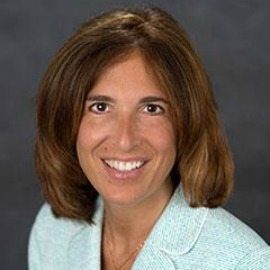
This three-part series features new Thomas Jefferson High School for Science and Technology Principal Dr. Ann Bonitatibus. She will be the keynote speaker for the fifth annual 2018 K-12 STEM Symposium on April 14 at the Nysmith School, in Herndon, Virginia.
As educators work to strengthen students’ STEM and other knowledge areas, they’re also having to address an equally important issue Dr. Ann Bonitatibus says has become “a national dilemma” — emotional wellness.
The Thomas Jefferson High School principal said the dilemma may have been generated in part from federal legislation related to test scores for individual students, schools and districts.
“Unfortunately, that has led to an overemphasis on outcome measures through standardized testing and standardized measures,” she said. “What we’ve lost in that process is the joy of teaching and learning. Rather than our really great professionals and really great students having opportunity and time to be reflective, to be innovative, to feel OK with experimenting and failing, it almost feels as if public education has retreated and is hesitant to try things that are new. Our teachers and students may feel they don’t have the time or are unwilling to take the risk to fail.
“The result of all that is that we have much higher anxiety and stress in the profession and in our classrooms for both teachers and students.”
Bonitatibus is one of several speakers at the April 14 STEM Symposium. The all-day event is expected to draw more than 4,000 students, parents, educators and executives from the corporate, government, academic and nonprofit sectors. There will also be more than 50 exhibitors and at least 20 student showcases. Registration is ongoing.
“At TJ this year, we have been really trying to create awareness about balance and the kinds of things that we can do to address balance,” Bonitatibus said.
Students and parents at many schools often point to workload issues as a source of stress, she said. With that in mind, the school has surveyed its teachers about their perceptions on workload and has likewise surveyed a random sampling of students on the same issues.
“Once we get all of that information back we are interested in mapping the perceptions and realities together,” she said. “There are many different anecdotal narratives from students about how much time they spend, so we want them to be honest in their assessment. We know some students report they work five hours nightly on assignments, but we also know that some of our students will engage on social media during that time. Once you subtract that time, maybe it was only three hours and not five hours spent.
“Where teachers may find that certain assignments and their requirements in their mind might only take an hour a night — we might find out from students that it takes significantly longer than that. We are a research school and we are a laboratory school, so studying a problem before deriving a solution comes naturally to us. Our first step was to create awareness around the issue, and now we’ve taken steps to research what the problems might be.”
Bonitatibus said TJ is also working aggressively and overtly to discuss mental wellness in a broader sense and distinguish between issues they need to address and issues that are clinical. For clinical issues, the educators’ roles center on helping students find appropriate resources and support.
“However, what is within our control is the overall learning environment and the kind of culture we create,” she said. “It is important to us to avoid generating triggers that exacerbate children who may be suffering from depression and anxiety.”
Bonitatibus said TJ is in the beginning stages of forming a coalition of parents, students and staff members interested in developing common goals and defining roles and responsibilities. The school’s PTSA has also been supportive hosting a Principal’s Book Club this past winter, where parents talked about their intersecting roles with students and teachers.
“We have embarked on a collaborative process with our community, and I am really proud that we’ve gotten to this point,” she said. “We’ve developed awareness, and now we are starting to do the research and take action. It will take a few years . . . As a nation, we didn’t arrive here overnight, and it’s not something that we are going to be able to solve overnight. The more we publicly recognize that we always want to do what is in the best interest of our students, the more I truly believe that everything else will fall in line.”

